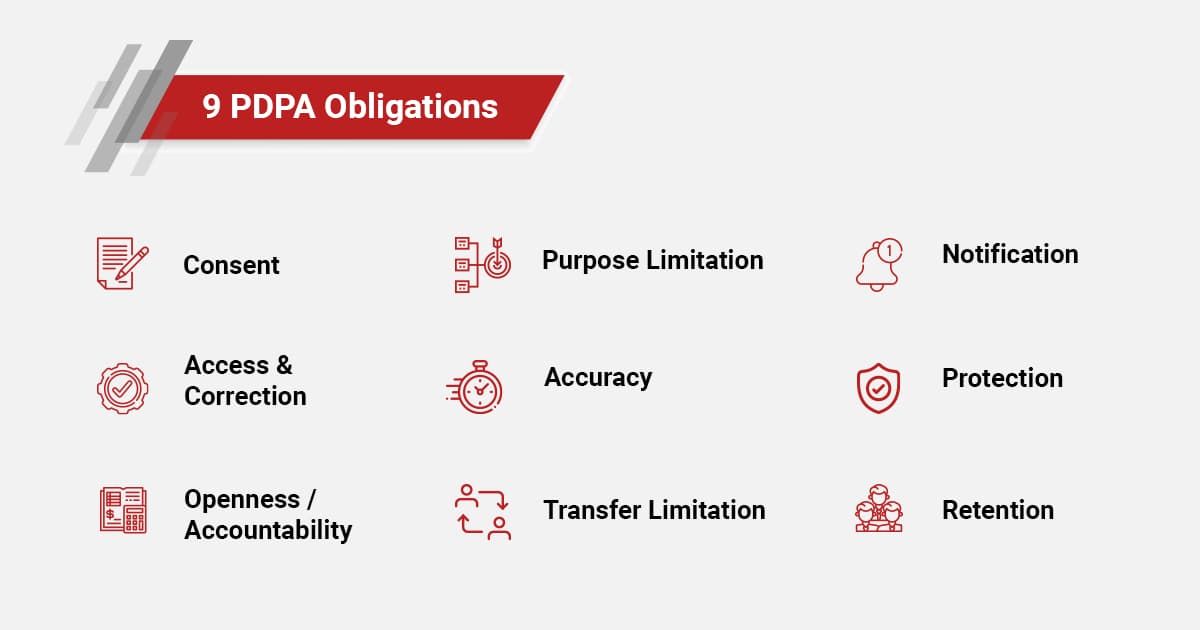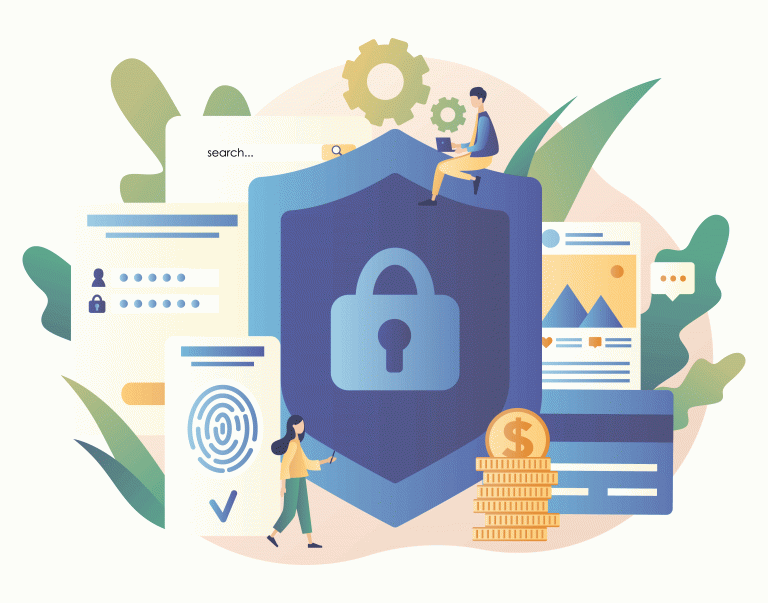
The Future of Predictive Technology: Innovations to Watch in 2024
July 26, 2024






Importance of Data Protection
In today’s digital age, data is the new gold. Companies are mining it, governments are regulating it, and consumers are worried about it. The global landscape of data protection laws is as varied as a box of chocolates. From the European Union's stringent GDPR to California's CCPA, every jurisdiction seems to have its own set of rules. And then there's Singapore, with its Personal Data Protection Act (PDPA), standing tall as a beacon of data protection in Asia. This isn't just about avoiding fines—it's about trust. After all, who wants their data handled by someone who doesn’t know the first thing about protecting it?
Objective of the Blog
In this blog, we’ll dive deep into the ins and outs of PDPA compliance. We'll explore best practices that can keep your company on the right side of the law and highlight common pitfalls that can trip up even the most well-meaning organizations. Whether you're a seasoned data protection officer or a newbie just dipping your toes into the world of PDPA, this guide is your roadmap to navigating Singapore's data protection landscape.

Definition and Scope
The Personal Data Protection Act (PDPA) is Singapore’s answer to the global call for data protection regulations. Enacted in 2012, PDPA aims to govern the collection, use, disclosure, and care of personal data. But what exactly is personal data? In simple terms, it’s any data that can identify an individual, either on its own or in combination with other data. This could be anything from a person’s name and address to more sensitive information like their NRIC number or medical history.
The PDPA applies to all organizations in Singapore, including those based overseas if they handle personal data from Singapore residents. It's not just businesses; even non-profits and educational institutions fall under its purview. The act is comprehensive, covering all aspects of data handling, from collection to disposal. It's like a rulebook for how to play the data game, ensuring that everyone respects the rules and keeps personal data safe.
Key Principles of PDPA
The PDPA is built on several key principles, each designed to ensure that personal data is handled responsibly. Here’s a breakdown of these principles:

Data Collection and Processing
Obtaining consent from individuals is not just a checkbox exercise. It’s a critical step in PDPA compliance. Organizations should ensure that consent is obtained in a clear and transparent manner. For instance, when collecting data online, use straightforward language and avoid legal jargon that could confuse users. It’s also essential to inform individuals of the purpose for which their data is being collected. This not only builds trust but also ensures compliance with the Purpose Limitation principle.
To put this into practice, consider a scenario where a retail company collects customer data for marketing purposes. The company should clearly explain to customers that their data will be used to send promotional materials and offers. If the company later decides to use the data for a different purpose, such as sharing it with a third-party analytics provider, they must obtain fresh consent from the customers. This keeps everything above board and transparent.
Data Storage and Protection
Once personal data is collected, the next challenge is keeping it safe. Implementing robust security measures is a must. This can include technical measures like encryption and firewalls, as well as administrative measures like access controls and regular audits. It’s also crucial to review and update these security measures regularly. Cyber threats are constantly evolving, and what was secure yesterday might not be secure today.
For example, a financial institution should encrypt sensitive customer data and restrict access to this data to only those employees who need it to perform their duties. Regular security audits can help identify vulnerabilities and ensure that the institution’s security measures are up to date. Additionally, educating employees about data protection and the importance of following security protocols can go a long way in preventing data breaches.
Data Access and Correction
Under the PDPA, individuals have the right to access their personal data and request corrections if there are inaccuracies. Organizations should establish clear procedures for handling such requests. This includes verifying the identity of the individual making the request and ensuring that the data provided is accurate and complete.
Imagine a scenario where a telecommunications company maintains a database of customer information. If a customer requests access to their data and finds an incorrect address, the company must correct this information promptly. Failure to do so can lead to a breach of the Accuracy principle and potentially result in penalties.
Data Retention and Disposal
Data retention policies are another critical aspect of PDPA compliance. Organizations should establish clear guidelines for how long personal data will be retained and ensure that data is disposed of securely when it is no longer needed. This helps prevent unauthorized access to personal data and reduces the risk of data breaches.
For example, an e-commerce company might retain customer data for a certain period after a purchase to facilitate returns and customer service. However, once this period has passed, the company should securely delete the data to comply with the Retention Limitation principle. This not only ensures compliance but also reduces the company’s data storage costs.
Accountability and Governance
Finally, organizations must be accountable for the personal data they handle. This includes appointing a Data Protection Officer (DPO) who is responsible for overseeing data protection practices and ensuring compliance with the PDPA. Regular audits and training are also essential to ensure that all employees understand their responsibilities and the importance of data protection.
For instance, a healthcare provider might appoint a DPO to oversee the handling of patient data. The DPO would be responsible for ensuring that the provider’s data protection policies are in line with the PDPA and that all staff members are trained on these policies. Regular audits can help identify areas for improvement and ensure that the provider is continually complying with the law.

Lack of Awareness and Training
One of the most common pitfalls in PDPA compliance is a lack of awareness and training among employees. Many organizations assume that data protection is solely the responsibility of the IT department or the DPO. However, data protection is everyone’s responsibility. All employees should be aware of the PDPA and the organization’s data protection policies.
For example, in a company that handles sensitive customer information, front-line employees like customer service representatives need to be trained on how to handle personal data securely. If they are not aware of the PDPA’s requirements, they might inadvertently disclose sensitive information, leading to a data breach. Regular training sessions and refresher courses can help keep employees informed and vigilant.
Inadequate Consent Management
Obtaining explicit consent is a cornerstone of the PDPA, but many organizations fall short in this area. This can happen when consent is obtained in a vague or ambiguous manner, or when individuals are not informed about changes in how their data will be used. It’s essential to have a robust consent management system in place to track and manage consent.
Consider a scenario where a travel agency collects customer data for booking purposes. If the agency decides to use this data for marketing, they must inform customers and obtain fresh consent. Failing to do so can lead to a breach of the Consent principle and potentially result in penalties.
Poor Data Security Measures
Another common pitfall is inadequate data security measures. Organizations may implement basic security measures but fail to regularly review and update them. Cyber threats are constantly evolving, and what was secure yesterday might not be secure today. It’s crucial to stay ahead of these threats by regularly updating security protocols.
For example, a company might implement strong password policies but fail to update its software and systems regularly. This can leave the company vulnerable to cyberattacks. Regular security audits and penetration testing can help identify vulnerabilities and ensure that security measures are up to date.
Inaccurate or Outdated Data
Maintaining accurate and up-to-date data is essential for PDPA compliance. However, many organizations fail to do so, leading to issues with data quality. This can happen when organizations do not have clear procedures for updating and correcting data or when they do not regularly review and clean their data.
For instance, a financial institution might have outdated contact information for its customers, making it difficult to communicate important updates. This not only impacts customer service but also poses a risk to data protection. Regular data audits and verification processes can help maintain data accuracy and ensure compliance with the PDPA.
Inadequate Data Retention Policies
Finally, many organizations struggle with data retention and disposal. They may retain data longer than necessary or fail to dispose of it securely, leading to potential data breaches. It’s essential to have clear data retention policies in place and to regularly review and update these policies.
For example, a retail company might retain customer data long after it is no longer needed for business purposes. This increases the risk of unauthorized access and data breaches. Implementing a clear data retention policy and securely disposing of data when it is no longer needed can help mitigate these risks.
Summary of Best Practices and Pitfalls
In conclusion, PDPA compliance is essential for any organization handling personal data in Singapore. The key to compliance is understanding the PDPA’s requirements and implementing best practices for data collection, storage, access, and disposal. It’s also important to avoid common pitfalls such as inadequate consent management, poor data security measures, and retaining data longer than necessary.
Importance of Ongoing Compliance
Ongoing compliance is crucial in the ever-changing landscape of data protection. Organizations must continually review and update their data protection policies and practices to stay ahead of evolving threats and regulatory changes. By doing so, they can build trust with their customers and avoid the significant penalties associated with non-compliance.